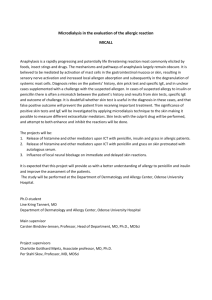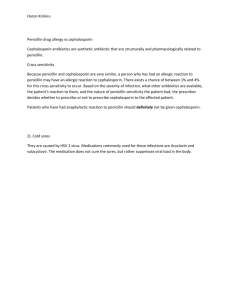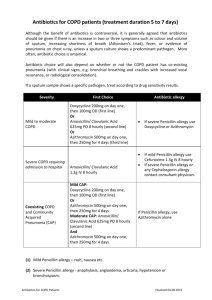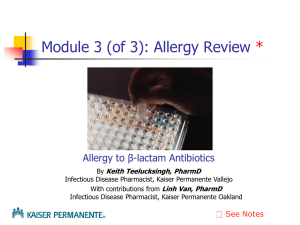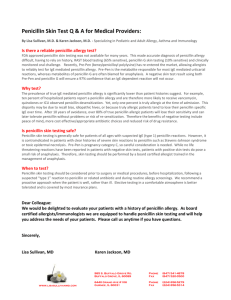Just the facts on penicillin allergy
advertisement
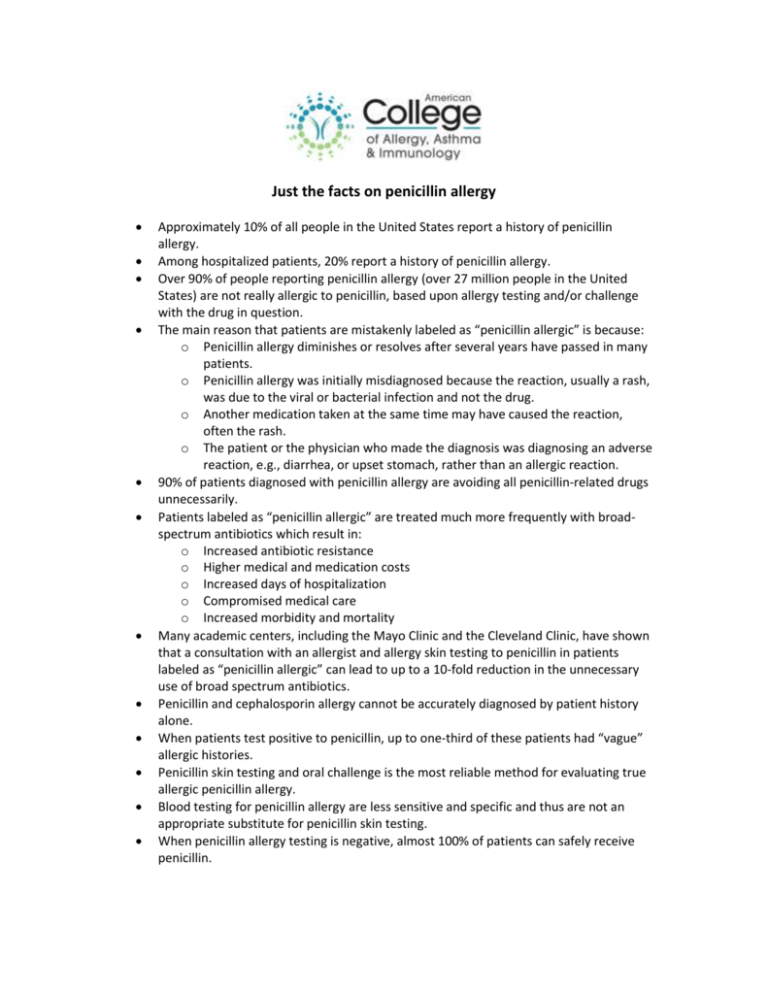
Just the facts on penicillin allergy Approximately 10% of all people in the United States report a history of penicillin allergy. Among hospitalized patients, 20% report a history of penicillin allergy. Over 90% of people reporting penicillin allergy (over 27 million people in the United States) are not really allergic to penicillin, based upon allergy testing and/or challenge with the drug in question. The main reason that patients are mistakenly labeled as “penicillin allergic” is because: o Penicillin allergy diminishes or resolves after several years have passed in many patients. o Penicillin allergy was initially misdiagnosed because the reaction, usually a rash, was due to the viral or bacterial infection and not the drug. o Another medication taken at the same time may have caused the reaction, often the rash. o The patient or the physician who made the diagnosis was diagnosing an adverse reaction, e.g., diarrhea, or upset stomach, rather than an allergic reaction. 90% of patients diagnosed with penicillin allergy are avoiding all penicillin-related drugs unnecessarily. Patients labeled as “penicillin allergic” are treated much more frequently with broadspectrum antibiotics which result in: o Increased antibiotic resistance o Higher medical and medication costs o Increased days of hospitalization o Compromised medical care o Increased morbidity and mortality Many academic centers, including the Mayo Clinic and the Cleveland Clinic, have shown that a consultation with an allergist and allergy skin testing to penicillin in patients labeled as “penicillin allergic” can lead to up to a 10-fold reduction in the unnecessary use of broad spectrum antibiotics. Penicillin and cephalosporin allergy cannot be accurately diagnosed by patient history alone. When patients test positive to penicillin, up to one-third of these patients had “vague” allergic histories. Penicillin skin testing and oral challenge is the most reliable method for evaluating true allergic penicillin allergy. Blood testing for penicillin allergy are less sensitive and specific and thus are not an appropriate substitute for penicillin skin testing. When penicillin allergy testing is negative, almost 100% of patients can safely receive penicillin. Penicillin allergy evaluation, skin testing and oral challenge are best performed electively when the patient is well, and not requiring the medication immediately as this reduces the risk to the patient. Delaying referral for penicillin allergy until an emergency situation arises raises the risk of illness and death, and increases overall medical costs. Less than 0.1 percent of patients with reported penicillin allergy undergo confirmatory testing. Primary care physicians are not aware of the necessity of referring patients with “penicillin allergy” to allergists for evaluation. Evaluation of a patient for penicillin allergy requires a consultation visit (usually 1-2 hours) and then a second visit for skin testing and oral challenge (usually 3 hours). Cephalosporin skin testing and oral challenge is less standardized than penicillin but can be of benefit in the evaluation of patients requiring a cephalosporin. While most patients with a history of penicillin allergy tolerate cephalosporins (a type of antibiotic), there have been rare reports of severe allergic reactions including fatality. Ideally, a patient with a history of penicillin allergy who requires a cephalosporin should be tested for penicillin. If the penicillin skin testing is positive, cephalosporin testing and oral challenge to the medication that is needed should also be completed. From the ACAAI 2015 Drug Allergy and Anaphylaxis Committee
